New Engines Lift 2014 Dodge, Jeep, Ram
By John Gilbert
DETROIT, MI.
You don’t have to be a resident to sympathize with Detroit’s well-publicized bankruptcy struggles, much in the way you didn’t have to own a Chrysler vehicle to sympathize when that proud Detroit company went into bankruptcy four years ago. We can only hope the city recovers as impressively as Chrysler has.
A brief glimpse at Chrysler Group LLC’s array of 2014 products at the company’s Chelsea proving grounds offers evidence that under the guidance of Fiat, the folks at Chrysler, Dodge, Jeep, Ram, and Fiat are definitely headed in the right direction. We hit Chrysler’s Chelsea proving grounds in Auburn Hills on a day that alternated between bright sunshine and quick-striking thunderstorms, which made some test drives more exciting than usual.
Chrysler competitors are flaunting more power and bigger engines, such as in the Corvette and new pickups at General Motors, or EcoBoost performance from smaller engines across the line at Ford, but Chrysler Group LLC is attempting to cover both extremes, as well as everything in between.
Fiat appears intent on making sure Chrysler continues to be known for its engineering, and no vehicle better exhibits that than the Dart, an attractive compact that perfectly fits the definition of a global venture. Dodge is the beneficiary of its own engineering and design, plus the the expertise of Fiat’s Alfa Romeo chassis engineers and Fiat’s unique MultiAir technology, and the Tiger Shark engine designed by Hyundai in Korea.
The Fiat 500 mini car gets surprising performance out of its tiny, 1.4-liter 4-cylinder by using MultiAir, which eliminates the need for an intake camshaft and instead uses a system of oil-pressured tubes that allow the exhaust valves to actuate the intake valves. It is a system that has been used on Formula 1 engines, and allows infinite valve overlap for more complete combustion. It also could be adapted to any engine, and the first attempt at that is the Tiger Shark 2.4-liter engine.
The Dart came out new as a 2013, but without the GT model, which is the one with the new MultiAir Tiger Shark engine. The Dart GT is ready to go as a 2014 model, which should help inspire a new wave of popularity for the well-designed global compact, and I got the chance to run a couple of GT models around the big test track and the intricate infield road course and found it to be satisfyingly strong in both stick or manual transmission form.
The 2.4-liter MultiAir develops 184 horsepower and 171 foot-pounds of torque and gets an estimated 41 miles per gallon. Dodge is wisely going to also use the new engine in the SXT and Limited Dart models, as well as the top-of-the-line GT, which starts at $20,995. The GT and SXT offer a manual transmission or the slick, Hyundai-sourced 6-speed automatic. The base SE offers a 2.0 version of the 2.4, while the Aero model will use the Fiat Abarth’s 1.4-liter MultiAir turbo. Read more
Ford focuses on refinement for 2014
By John Gilbert
DETROIT, MI. — Ford Motor Company didn’t need any sweeping style changes for its cars and trucks for 2014, not after redesigning virtually its entire model line in the last two years. Therefore, Ford has turned its attention to refining its fuel-efficiency and technology leadership and to deal with the seeming contradiction that customer survey complaints for balky complexity of certain technology features for 2013 models were countered by unprecedented customer satisfaction numbers and high “take rates” on those same technology items.
Ford officials discussed those issues while showing off the new 2014 vehicles at the annual media preview at its Dearborn vehicle development facility in the last week of June. Included among the newest vehicles is a new Tremor version of the popular F-150 pickup line — a regular-cab model with special trim and a 365-horsepower EcoBoost V6.
The success of Ford’s EcoBoost technology is a major part of Ford’s new arsenal of engines, with those displacing 3.5, 2.0, and 1.6 liters adding turbocharging to earn the EcoBoost designation; they perform with the power of larger engines while getting the significantly better fuel economy of smaller displacements. This fall, Ford will unveil its unique 3-cylinder, 1.0-liter EcoBoost engine in the Fiesta subcompact.
Since getting a preliminary test drive in new models is a prime lure to get the media to attend this event, we all eagerly hustled out onto one of Ford’s test tracks to try the 1.0 EcoBoost, but we were told it won’t be out until this fall. We had to be satisfied by running the 1.6 EcoBoost Fiesta ST around an autocross course, which was impressive indeed. Read more
NHL draft, U.S. symbol highlight July 4th
By John Gilbert
There is Duluth Huskies and American Legion baseball, dirt track auto racing, and recreational sports, to occupy our summertime in the Northland. For me, sightseeing anywhere near Lake Superior is a highlight, and spotting the occasional wildlife critter sets it apart.
On Monday, I returned home to Lakewood after doing my KDAL radio show, and as I got out of the car I saw a shadow over the bright sun. Glancing up, I saw a big, immature bald eagle circling above my driveway. I went inside, and while eating a little lunch, I again saw a shadow pass swiftly over my deck. I picked up my camera and went out on the deck, searching the sky for a possible return flight of the eagle.
As I got to the corner of the house, I looked up in the tall spruce tree closest to the house, and spotted a white object at the very top. I did a quick-draw with my camera, and inspired the bird to fly. It was a full-scale, mature bald eagle, and it flew quickly away as I caught just one good photo.
Maybe wildlife photography qualifies as my new favorite summertime sport.
DRAFT ENDS HOCKEY SEASON
We have hit July, and finally the tumultuous 2013-14 hockey season can be put behind us. Last Sunday’s NHL amateur draft had some surprises and some adjusting by most of the league’s teams, and only time will tell how effective those moves were.
The Minnesota Wild suffered what I think is a difficult blow by trading Cal Clutterbuck to the New York Islanders. Clutterbuck is an always-hustling, always-hitting winger who is among the NHL leaders in hits year after year. Critics said he was expendable as a restricted free agent, and that he didn’t score enough this past season. In my mind, he seemed to score and be in the middle of the action whenever he played on one of the top two lines, but this past season he had reduced ice time, playing on the fourth line much of the time as general manager Chuck Fletcher acquired better offensive players to play ahead of him.
The Wild added Swiss prospect Nino Niederreiter from the Islanders in the Clutterbuck trade, and drafted 6-foor-3 defenseman Gussav Olofsson on the second round. Olofsson moved to the U.S. from Sweden when he was 6, grew up in San Jose, made the USHL all-rookie team playing at Green Bay, and will play at Colorado College this fall. The Wild also drafted Canadina juniors, forward Kurtis Gabriel of Owen Sound on the third round, and defenseman Dylan Labbe from Shawinigan, Quebec, on the fourth.
The big trade was the Wild’s biggest news. At the still-young age of 25, Clutterbuck was a fan favorite at Xcel Energy Center, and has a bright career ahead of him for the Islanders, who were one of many teams trying to gain his services. Once again, we’ve heard from unknowing newspaper and radio critics in the Twin Cities who acted as though a down year in scoring in only his third full year in the NHL rendered Clutterbuck expendable. However, those same cynics ripped Fletcher for trading Clutterbuck and a third-round draft pick for Niederreiter. One guy said he’s never scored, but did well for Switzerland’s team in the World Junior Championships.
Hold on, there, hockey bozos. Nino Niederreiter is a 6-foot-2, 210-pound prospect who was drafted at age 18 by the Islanders as the fifth player taken in the first round in 2010. He came to North America and played for the Portland Winterhawks in Canadian Major Junior hockey, where he scored 130 points in 120 games. He turned pro and played in 64 games for the Islanders over the past two, scoring only two goals and one assist — but playing only a few shifts a night on the fourth line and sitting out frequently. For some reason, the Islanders never gave him the kind of look the Wild gave to Charlie Coyle or Jonas Brodin this past season, and he wasn’t even invited to training camp, even after scoring.28 goals in 74 games for Bridgeport of the American Hockey League. So he asked to be traded.
Amid all of this, one of the great stories of the past hockey season was Switzerland’s performance in the World Championships — not juniors, but the big one. Because of its recent improvements, and a few upsets in international play, I knew Switzerland had some good young players, but this year it all came to blossom. Switzerland beat everybody, rolling through the entire preliminary round undefeated. Then it won its first playoff game, while Team USA was beating Russia 8-3. I predicted on my KDAL radio show that the U.S. had best be prepared, because following up such a great victory over Russia offered no insulation against an upset against, of all teams, Switzerland. Sure enough, Switzerland beat Team USA in the semifinals, and advanced to the Gold Medal game, where it lost to defending champ Sweden, which had just added the Sedin twins from Vancouver to its all-star NHL roster. That meant Switzerland wound up with the Silver Medal — its best finish ever.
Niederreiter, after scoring 2-1–3 in 64 NHL games for the Islanders, scored 5 goals and 3 assists in the World Championship tournament, against the best available pros in the world.
The cynics make it sound like Clutterbuck wasn’t worth much, but the new guy is only a junior player. I hate to see Clutterbuck leave the team, but, for certain, it sounds as though Nino Niederreiter could be an impressive young prospect who could seriously help the Wild right away.
Free agency has juggled the scene around the NHL, as general managers try to trade or buy out high-end players to stay under the NHL salary cap. Tampa Bay, which is a top threat with Martin St. Louis and Vincent Lecavalier as a 1-2 punch, failed to make the playoffs this past season, while St. Louis won the scoring title, but Lecavalier suffered with injuries. So Tampa Bay bought out his contract for the astounding figure of $32,666,666. If he bounces back from the injuries, Lecavalier should be a great player for somebody, and he will have a nice bank account to soothe him while he chooses a new team.
Then there are the Vancouver Canucks. Remember how they made the critical decision that veteran goaltender Roberto Luongo was expendable, and it was time to give the No. 1 job to Cory Schneider? Well, Schneider had his problems, and Luongo got back into the picture, and ended up No. 1 for the playoffs — which the Canucks promptly lost in the first round. After trying unsuccessfully to trade Luongo all season, the Canucks have now traded Cory Schneider instead — to the New Jersey Devils, where, at age 27, he will now get tutored by Richard Brodeur and undoubtedly will be groomed to take over and become a superstar.
Minnesota homestate players once again proved why hockey is the most significant contributing sport to the pros, with 14 players taken in the NHL draft. They include Avery Peterson of Grand Rapids, taken in the sixth round by the Wild. He apparently has decided to pass up his senior year with the Thunderhawks to take his sharp-shooting eye to the Sioux City USHL team, according to the Minneapolis Star Tribune.
A key pick is Washington’s fifth-round selection of Blake Heinrich, a talented and hard-hitting defenseman from Hill-Murray who played for Brett Larson at Sioux City this past season, when he could have been a senior with the Pioneers. Heinrich is headed for UMD and is my choice to be a crowd favorite and make every foe’s hate-to-play-against list.
Also in the draft, Michael Brodzinski from Blain was picked by the San Jose Sharks, and Jonny Brodzinski, his brother, was taken on the fifth round by the Los Angeles Kings. Michael, the younger, is a defenseman and went on the 141st pick, while Jonny, a forward, was taken with the 148th pick. Now, Michael is considered the better prospect, perhaps, but he’s played high school with a year of junior, while Jonny joined the St. Cloud State Huskies and scored an amazing 22 even-strength goals as a freshman, helping the Huskies to the WCHA championship and into the NCAA tournament.
Fantastic Stanley Cup final we recall, with the Chicago Blackhawks completing an almost perfect season by beating the Boston Bruins in six games for the Cup, after starting this lockout-shortened season with an unprecedented 21-0-3 record, then finishing with the best overall record in the NHL. After beating the Wild in five games, the Blackhawks responded to a 3-1 deficit in games against the Detroit Red Wings with three straight victories, and went on to beat the Los Angeles Kings, and the Bruins, to win the Cup.
The glory can pass quickly for some, however. The Blackhawks faced the departure of some of its top young players, so they traded two vital parts of their Stanley Cup championship team by sending Dave Bolland to Toronto and Michael Frolik to Winnipeg, both for draft choices.
TWINS OUTFIELD, ALMOST
While the Minnesota Twins stay in contention with hot and cold performances, try to imagine how the team would look with an outfield of Michael Cuddyer in left, Carlos Gomez in center, and Torri Hunter in right. Gomez is the wall-climbing ballhawk in center for the Milwaukee Brewers, and is hitting .317 now that he’s matured into a solid Major Leaguer. Hunter is aging, but gracefully, as a .300-hitting right fielder for the Detroit Tigers.
And Cuddyer? Well, we can only go back to the trade of the popular Cuddyer for Josh Willingham, as the Twins tried to improve on the home run tally from its outfield. At the time, I wrote that Cuddyer was just as good a hitter, and a much better outfielder, although Willingham has been very effective hitting home runs and driving in runs for the Twins.
However, right now, Willingham is hitting a mere .224, with 10 home runs and 37 RBIs. Cuddyer is hitting .346 for the Colorado Rockies, standing second in the National League. As of Monday, Cuddyer also was on the Major League best 27-game hitting streak. And he’s still playing right-field walls and throwing strikes back to nail runners in the infield.
Nissan Versa hits high Note
By John Gilbert
Nissan is expanding its popular Versa subcompact line by adding a new Note, with a more versatile wagon-like shape to take on top segment competitors. Combining the Sentra and the Sentra Note, it would appear Nissan has the subcompact segment covered, chapter and Versa. To coin a phrase.
The Nissan Versa is like a successful singer in the choir of subcompacts, able to carry a tune but preferring to blend into the harmony than to stand out as a solo act. Maybe that subtlety has helped the Versa lead the segment in sales, but its new member appears much more eager to grab the spotlight and hit all the high notes.
Honda has its versatile subcompact with the Honda Fit, competing with the Versa sedan, and Nissan doesn’t apologize for going after the Fit’s versatility with the wagon-back Note. The Hyundai Accent and Kia Rio both offer sedans and wagon-style variations, and Ford’s Fiesta also has a turned up rear that adds to utility, while the Mazda5 is a similarly contoured mini-minivan.
If those competitors sing well as small family haulers, Nissan strikes back by adding the Note.
Facing the still-recovering economy, Nissan paid strict attention to two key factors that motivate subcompact buyers — sticker price and fuel economy — at every step of developing the Note.
The base S is the only Note with a 5-speed manual transmission, and starts at $13,990, which is $680 less than the previous base model Versa. The S with CVT starts at $15,240; the S-Plus is at $15,990; the SV with Convenience package starts at $16,530; the SV with SL package at $17,690; and the top of the line SV-SL-Tech model opens at $18,490.
The package upgrades add, by steps, different features, including Bluetooth, leather steering wheel cover, rear monitor, upgraded audio, heated front seats, and surroun-view monitor plus navigation, among other things, but in each case, the Note starts with a well-equipped base at a price that ranks less than existing Versas. Read more


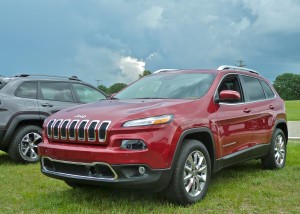
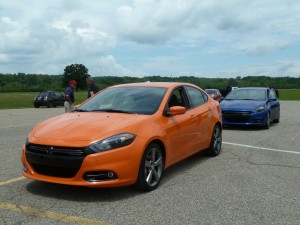
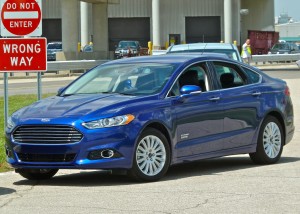
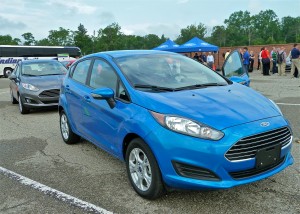
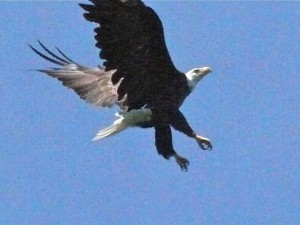

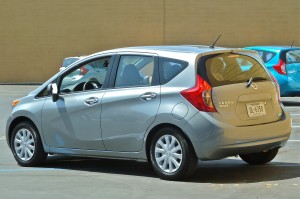
 John Gilbert is a lifetime Minnesotan and career journalist, specializing in cars and sports during and since spending 30 years at the Minneapolis Tribune, now the Star Tribune. More recently, he has continued translating the high-tech world of autos and sharing his passionate insights as a freelance writer/photographer/broadcaster. A member of the prestigious North American Car and Truck of the Year jury since 1993. John can be heard Monday-Friday from 9-11am on 610 KDAL(www.kdal610.com) on the "John Gilbert Show," and writes a column in the Duluth Reader.
John Gilbert is a lifetime Minnesotan and career journalist, specializing in cars and sports during and since spending 30 years at the Minneapolis Tribune, now the Star Tribune. More recently, he has continued translating the high-tech world of autos and sharing his passionate insights as a freelance writer/photographer/broadcaster. A member of the prestigious North American Car and Truck of the Year jury since 1993. John can be heard Monday-Friday from 9-11am on 610 KDAL(www.kdal610.com) on the "John Gilbert Show," and writes a column in the Duluth Reader.